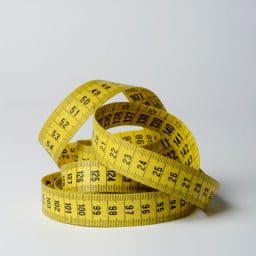Your hearing ability is measured in two ways: volume and frequency. Volume, or loudness, is measured in decibels (dB) and frequency, or pitch, is measured in hertz (Hz). As hearing loss progresses, it tends to become more difficult to hear sounds that are low in volume (like rustling leaves) and those high in frequency (like children’s voices).
How Sound Is Measured

Any sound over 85 dB can cause permanent damage to your hearing over time. For reference, here are some everyday sounds and their decibel outputs:
- Breathing: 10 dB
- Conversation: 40-60 dB
- Lawnmower: 90 dB
- Rock concert: 120 dB
- Gunshot: 140 dB
Audiologists typically test sounds between 10 dB (quiet sounds one can hear when hearing is normal) and 100 dB (sounds that are considered loud but not uncomfortable for most people).
Humans beings can hear frequencies between about 20 and 20,000 Hz when hearing is normal. However, audiologists typically only test sounds between about 250 and 8000 Hz, encompassing speech frequencies, which are most important for communication.
Degrees of Hearing Loss
When measured together during a hearing test, decibels and hertz can indicate a patient’s degree of hearing loss.
Slight Hearing Loss
This degree of hearing loss means you cannot hear sounds below 15-20 dB, like whispering or rustling leaves. While most adults with slight hearing loss can go untreated, many children with this degree are fit with hearing aids for language development.
Mild Hearing Loss
This degree means difficulty hearing sounds under 26-40 dB. You may miss some words in group settings, especially when there is a lot of background noise. You may be fit with hearing aids if you have an active lifestyle.
Moderate Hearing Loss
People with moderate hearing loss cannot hear sounds below 40-69 dB. They may find themselves asking people to repeat themselves frequently, and certainly benefit from the use of hearing aids.
Severe Hearing Loss
This degree means inability to hear sounds quieter than 70-94 dB. While hearing aids are often helpful, many people with severe hearing loss also rely on visual cues like lip reading as well.
Profound Hearing Loss
Profound hearing loss is inability to hear sounds under 95 dB. Hearing aids are not always helpful for this level of hearing loss, and bone anchored hearing aids or cochlear implants may be recommended. Many people with profound hearing loss communicate using sign language.
For more information about the degrees of hearing loss or to schedule an appointment, call The Hearing & Balance Center.
